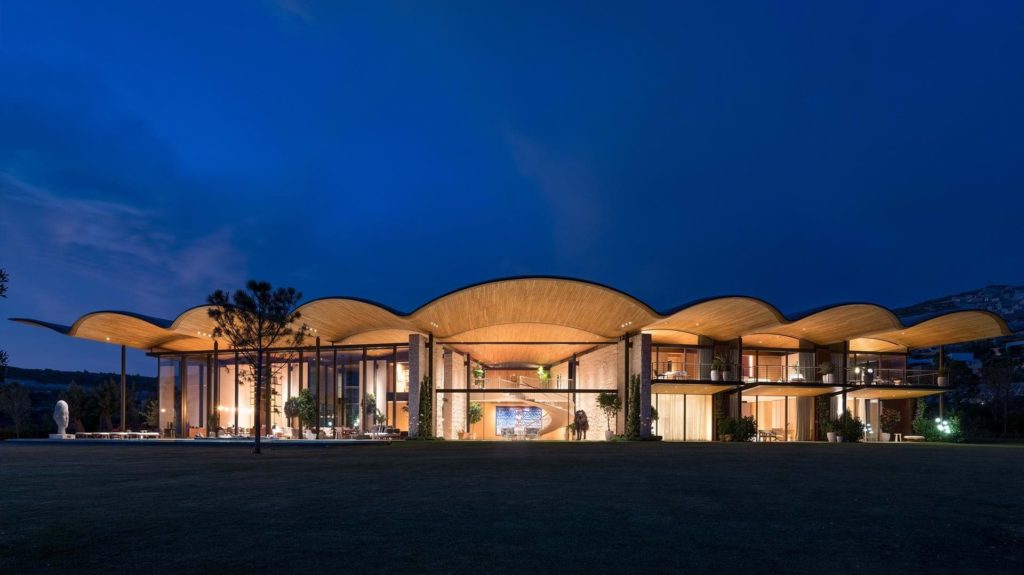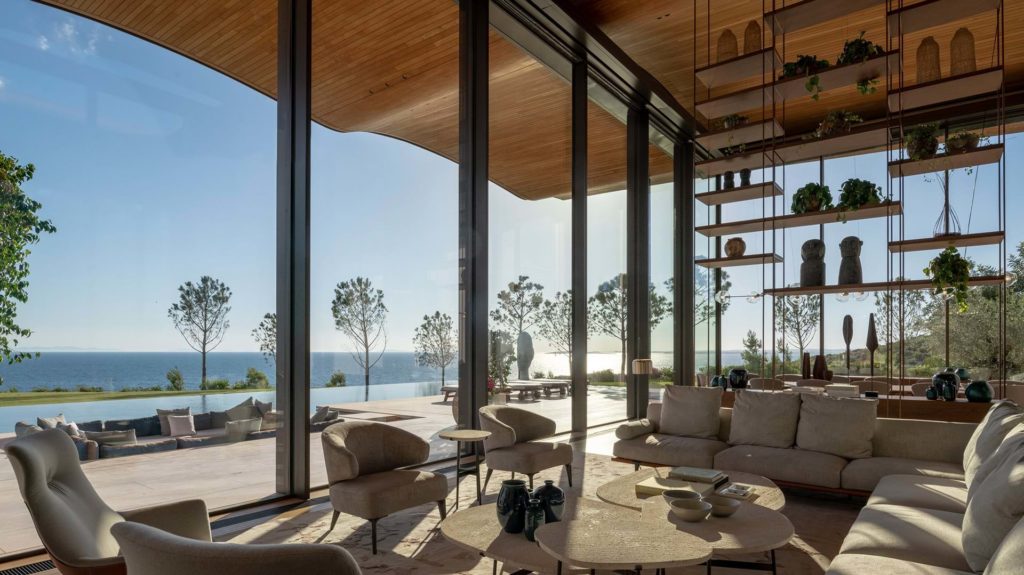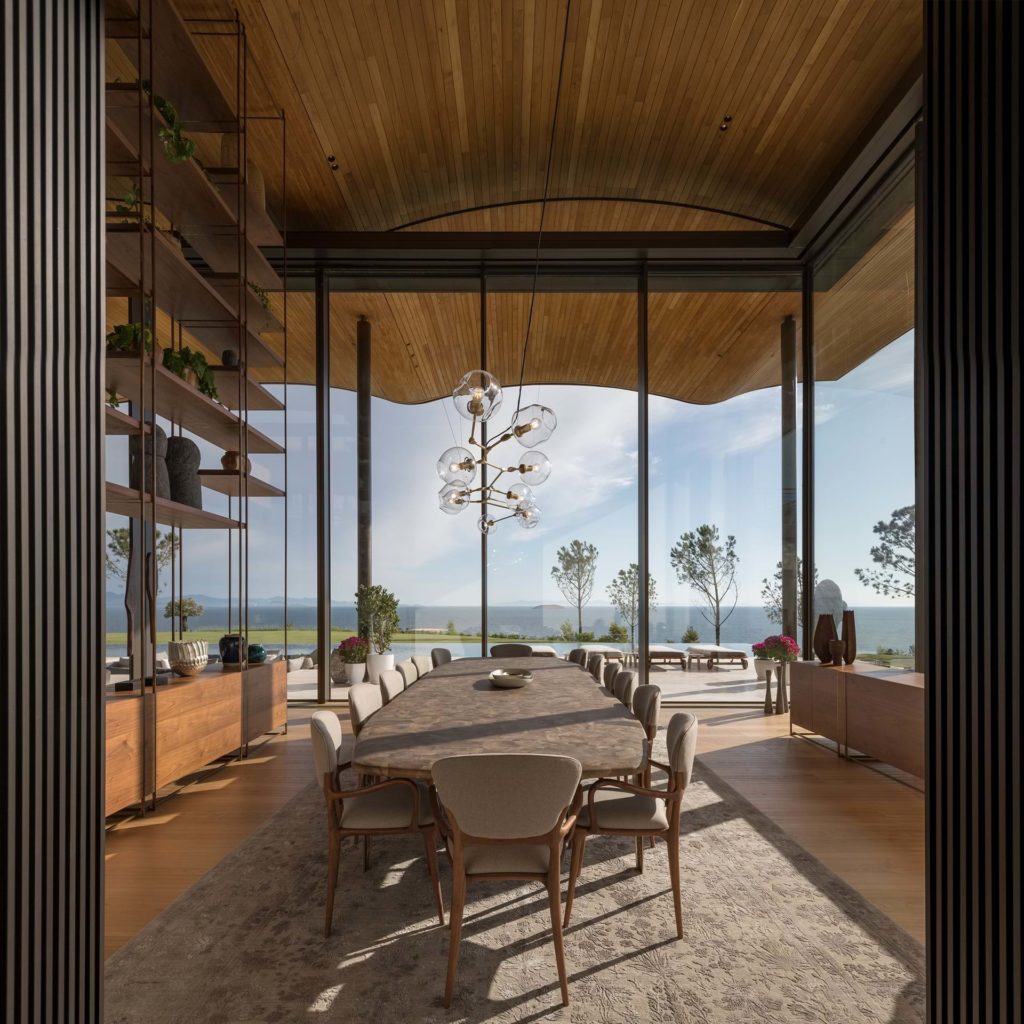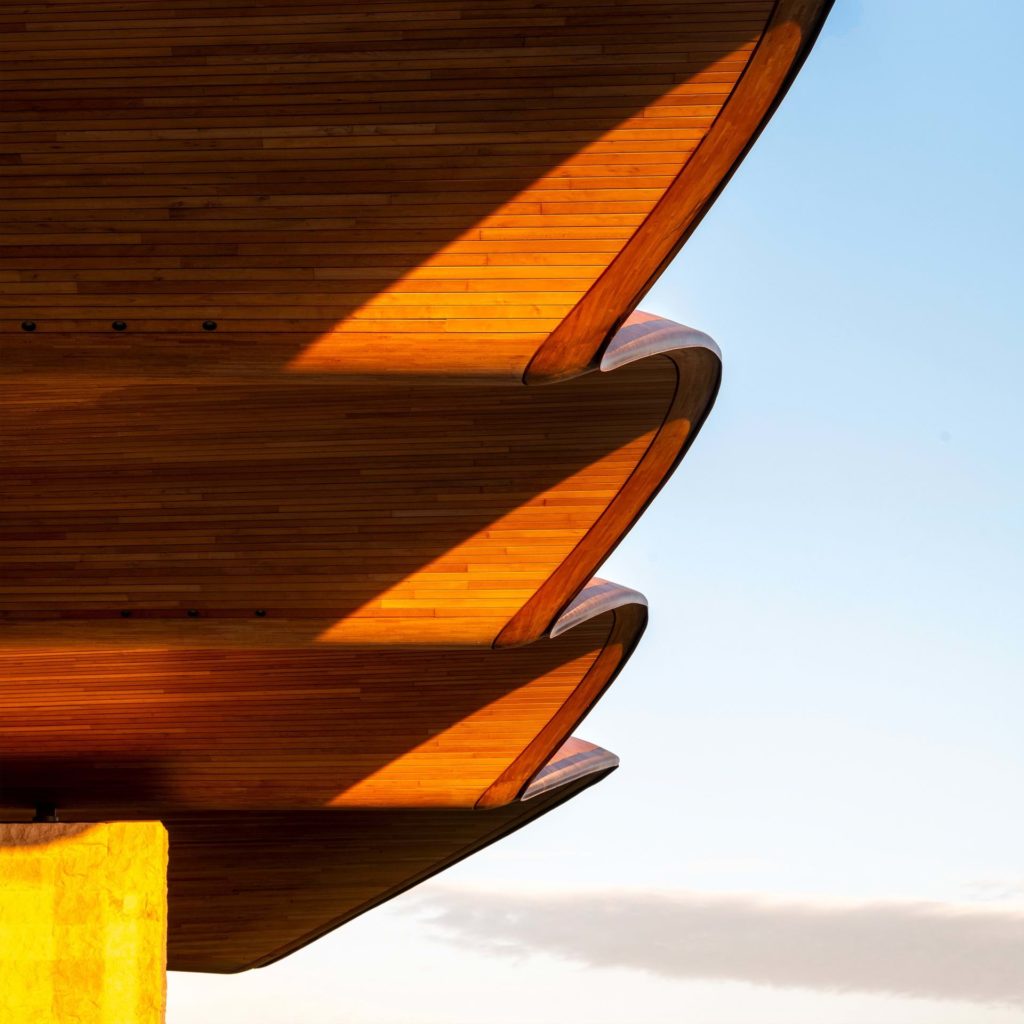
Situated along the coast of the Aegean Sea in Turkey’s southwestern province of Muğla, the private Dolunay villa has been carefully sited amid the natural rugged setting, prioritising the spectacular sea views.
David Summerfield, Head of Studio, Foster + Partners, said: “We were fascinated by the local landscape and wanted it to flow through the interior spaces and effectively disguise the building. Even though it gets incredibly hot in the summer, we wanted the building to be able to breathe naturally. The landscaped open courtyards within the house allow the prevailing sea breeze to gently move through the villa. These are simple ideas that have come together in an elegant way.”

The site is accessed from the north, with a curving road that leads to the drop-off for the villa. The design uses the natural contours of the site to create a low-rise building that appears as a single storey structure on approach. The house is embedded within a beautiful Mediterranean garden that offers a multisensory experience with fragrant plants such as thyme and lavender alongside rich seasonal planting and mature olive trees. The main entrance takes you directly to the heart of the villa with the private family quarters to the eastern side, orientated to respond to the contours of the site, and the public living and dining areas to the west, with exceptional views of the setting sun over the Aegean.

The journey through the villa is from ‘opaque to open’, reflecting the differing levels of privacy throughout and the design seeks to blur the boundaries between inside and outside living, with the large glass doors along the façade that slide back completely providing an unobstructed flow of space between the interior and exterior spaces.
Niall Dempsey, Partner, Foster + Partners, commented: “There's a real split between the public forum and the private. A sense of discovery and a richness of experience comes through in the way the spaces change as you walk through the site.”
The house features a handcrafted undulating structural timber roof, designed in conjunction with Swiss firm Blumer Lehmann. The prefabricated and precision-engineered structure contains substantially less carbon than a typical concrete roof. The solid structural oak beams rest on steel columns, supporting a large 7.5m cantilever, providing generous outdoor shaded spaces and cool shaded courtyards to the rear.

The central feature stair that connects the two levels is made from solid Portuguese limestone and is supported through post-tensioned cables running through the stone with no other visible supports. Preserving the purity of the staircase and offering a feeling of lightness, the balustrades are made from thin glass tubes with a timber handrail that has been bent and shaped on site.

Reflecting the high levels of craftsmanship in the design, each element has been designed to respond to the specific requirements of the client – from hand-carved solid timber doors to bespoke ceramic tiles and basin in the bathrooms. There is a smaller sunset pavilion closer to the coast that features natural stone walls, olive groves, wooden tables and a bamboo soffit.
Inspired by the villa’s immediate surroundings, the natural interior material palette consists of stone, wood and bronze and features various tones of warm browns and greys found throughout the rocky outcrops and sandy beaches of the site. The choice of oak joinery and leather furnishings provides a relaxed, elegant feel to the coastal retreat.
[…] Along the street´s promenade, a construction catalogue is displayed. Due to this, the reduction of components in the design language, the material as an expression itself, and the presence of the building as a definition in its own: concrete in its purest state with no elements making reference to the domestic, clearly defining the limit between the public and private space. […]
[…] grey stones, mahogany wood, detailed topography, and the surrounding vegetation and river are combined to make […]